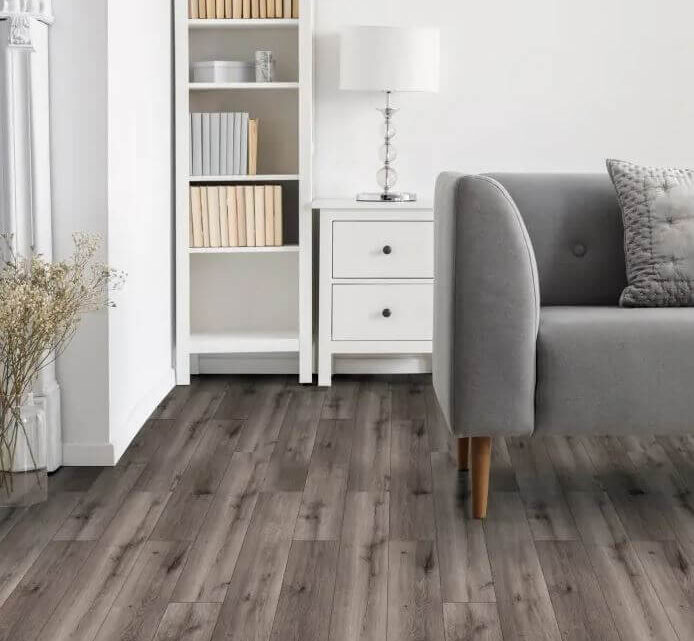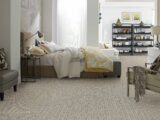
Why Vinyl Flooring Is the Future of Sustainable Interior Design
April 7, 2025As the demand for sustainable living grows, home design trends are increasingly shifting toward eco-friendly options. Vinyl flooring dubai, often regarded as a more affordable and versatile option, has now emerged as a front-runner in the sustainable interior design movement. Once associated with low-end finishes, vinyl flooring is experiencing a transformation. With innovations in production, materials, and design, it is becoming a top choice for homeowners looking to enhance their spaces while reducing their carbon footprint. In this blog post, we’ll explore why vinyl flooring is considered the future of sustainable interior design.
Recycling and Eco-Friendly Materials
One of the most significant reasons vinyl flooring is gaining popularity in sustainable interior design is its potential for recyclability. Modern vinyl flooring is often made from recycled materials, helping to reduce waste. For example, some manufacturers use recycled PVC (polyvinyl chloride) and post-consumer waste to create their flooring products, minimizing the environmental impact. Additionally, at the end of its life cycle, vinyl flooring can often be recycled into new products, further reducing landfill waste.
In response to growing environmental concerns, many vinyl manufacturers are adopting practices that support a circular economy, where materials are reused or recycled rather than disposed of. This approach significantly reduces the demand for raw materials, minimizing the overall environmental footprint of vinyl flooring.
Long-Lasting Durability
Durability is a key factor that makes vinyl flooring a sustainable choice. Unlike traditional hardwood or carpet, vinyl is highly resistant to wear and tear, scratches, and stains, which means it requires less maintenance and replacement over time. The longer a floor lasts, the fewer resources are required for repairs, replacements, and maintenance. Vinyl flooring’s longevity makes it a more sustainable investment in the long run, as it reduces the need for frequent replacements, which is a common issue with other flooring materials like carpets or laminate.
Additionally, the durability of vinyl flooring means that it is less likely to require the use of harsh cleaning chemicals, which can be harmful to both the environment and human health. By opting for vinyl flooring, homeowners are making a choice that not only benefits the planet but also contributes to healthier living spaces.
Low Energy Consumption During Production
Another important aspect of vinyl flooring’s sustainability is its relatively low energy consumption during the production process. When compared to hardwood flooring, which requires the felling of trees and extensive processing, vinyl flooring has a far less energy-intensive manufacturing process. Vinyl flooring is made through a process called extrusion, which uses lower amounts of energy to produce compared to the cutting, sanding, and finishing processes required for hardwood.
Furthermore, vinyl flooring is often made using a blend of materials that include natural and synthetic elements, which allows it to achieve a balance of energy efficiency, durability, and aesthetic appeal. Many manufacturers are actively working to improve the efficiency of the production process, reducing carbon emissions and other environmental impacts.
Water Resistance and Reduced Maintenance Needs
Water damage is a leading cause of flooring deterioration, especially in areas like kitchens, bathrooms, and basements. Vinyl flooring excels in water resistance, making it an ideal choice for areas exposed to moisture. Unlike hardwood or laminate, vinyl does not warp or swell when exposed to water, extending the life of the floor.
Additionally, vinyl’s resistance to moisture means it doesn’t require frequent sealing or refinishing, which can consume additional resources and chemicals. Regular sweeping and occasional mopping are often all that is needed to keep vinyl floors looking pristine. This easy maintenance further enhances the sustainable nature of vinyl flooring, as it minimizes the need for harsh cleaning products and resources that would otherwise be used to maintain other types of flooring.
Innovative Manufacturing Practices
The vinyl flooring industry is continually evolving to reduce its environmental impact. Many modern vinyl flooring options are made using advanced manufacturing techniques that minimize waste. Some brands utilize water-based adhesives and inks in their products, which are much less harmful to the environment compared to traditional solvent-based alternatives. Furthermore, the production of vinyl flooring has increasingly shifted toward using non-toxic materials, making it a safer option for both the environment and indoor air quality.
Some vinyl flooring products are even designed with the environment in mind from the start. For example, luxury vinyl planks (LVP) and tiles (LVT) are often manufactured with minimal chemical treatments and are certified with eco-labels such as FloorScore, which ensures that the product meets stringent indoor air quality standards. These certifications make it easier for consumers to make informed choices that align with their sustainable living goals.
Aesthetic Appeal and Versatility
Another reason why vinyl flooring is becoming a sustainable choice for modern interiors is its incredible versatility in design. Available in a variety of styles, colors, and patterns, vinyl can mimic the appearance of high-end materials like wood, stone, and ceramic tile without the environmental costs associated with those materials. Whether you want the look of oak hardwood in your living room or a sleek marble design in your bathroom, vinyl can deliver the aesthetic without the need for harvesting trees or extracting natural stones.
The ability to mimic the appearance of other materials while being more affordable and sustainable makes vinyl flooring a smart choice for environmentally-conscious homeowners and designers. The flexibility of vinyl flooring also allows for seamless integration into a wide range of interior styles, from modern to rustic, making it an attractive option for any space.
Cost-Effectiveness with Long-Term Savings
Vinyl flooring’s cost-effectiveness also contributes to its sustainability. While the initial cost of vinyl may be lower than hardwood or other premium materials, its long lifespan, minimal maintenance needs, and durability make it a wise financial investment. Homeowners don’t need to worry about frequent replacements or costly repairs, which means they save money in the long run.
In addition, the installation process for vinyl flooring is typically quicker and less labor-intensive compared to other flooring types, which means lower labor costs and less energy used in the installation process. The combination of low upfront costs and long-term savings on maintenance, repairs, and replacements makes vinyl flooring an appealing option for sustainable interior design.
Conclusion
Vinyl flooring dubai has come a long way in recent years, evolving from a budget-friendly option to a leader in sustainable interior design. With its recyclability, durability, low environmental impact during production, water resistance, and innovative manufacturing practices, vinyl flooring is positioning itself as a top choice for eco-conscious homeowners. Its aesthetic versatility and cost-effectiveness further cement its place in the future of sustainable living. As more people seek ways to reduce their carbon footprints while creating beautiful, functional spaces, vinyl flooring is sure to play a central role in the sustainable home design movement.







